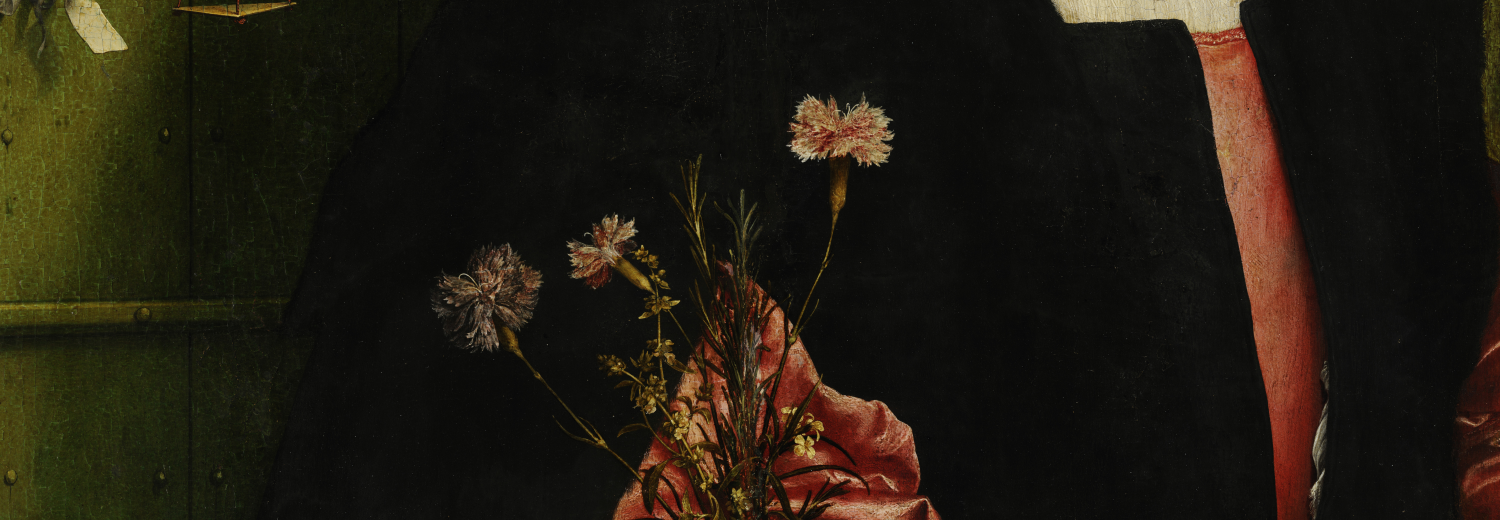Yolanda Rodríguez Pérez: ‘The past as warning through word and image.'
Justyna Wubs-Mrozewicz'The past as warning through word and image: the transnational case of a Dutch illustrated broadsheet (1598).'
As we continue our look back over our latest History in Conflicts Webinar, we now return briefly to the early modern period with our University of Amsterdam colleague, Yolanda Rodríguez Pérez. Rodríguez Pérez’s presentaiton tackled the theme of ‘The Past as a Warning in Word and Image’ using the evidence of a Dutch broadsheet first printed in 1598, but which had a legacy stretching into later centuries.
The broadsheet, titled ‘Nature and qualities of the seignior of Spain’, combines satirical images and text, with mocking phrases in Spanish alongside the main text in Dutch. Both components highlight supposed vices of the Spanish, in their public conduct as rulers of the Netherlands rulers as well as in their personal qualities. Drawing on the 'Black Legend' of Spanish cruelty, which was already widespread in protestant Europe, this broadsheet was quickly translated and adapted into English, French, and German. In fact, its success was so great that scholars have often ignored or failed to notice its Dutch origins and have discussed it directly in their own national contexts.
Originating amidst the Dutch Revolt, it is no surprise that this broadsheet found an international reception as a propaganda piece against Habsburg ‘universal monarchy’. The Dutch Republic’s prolific pamphlet industry regularly produced work that reached beyond the borders of the Netherlands. Since Dutch printers rose to prominence amidst their country’s Revolt against Spanish rule, the publications exported from the Low Countries were influential in spreading a negative image of the Spanish to other regions.
The top part of the print is dominated by sixteen images laid out in two rows. Relying strongly on its visual components, it shows the Spaniard as despicable in all areas of life. The images draw on a medieval repertoire of animal metaphors for sin, showing him as a wolf, a swine, a fox, a hare, and lamb each with its own critical implication that would have been familiar to the early modern audience. As Rodríguez Pérez summarised, the impact was twofold: ‘The Spaniard is the butt of ridicule and laughter, but at the same time he is frightening and never to be trusted’.
In the later visual panels, the creators of the broadsheet innovated on the Black Legend with more specific commentary on Spanish conduct against the Dutch. The evils of the inquisition, Philip II's private vices, conspiracies for universal domination, and innate Spanish cruelty all took on greater significance than in earlier Black Legend stories. The latter two elements are especially prominent in this broadsheet, which contrasts two scenes, one showing the ‘miserable estate to be under a seignior in subjection’ and one showing ‘a happy state to be free from the seignior’ and suggesting the Dutch Republic to be one such ‘happy state’. Thanks to the Netherlands’ well developed publishing industry, this pamphlet was able to gain a wide popularity. This spread meant that Dutch commentary on their ongoing War was able to take on a new character abroad. It came to be seen as a broadly historical argument that the Spanish were a danger to other nations and regions, and that Spanish plans for universal rule were to be watched for and resisted.
This adaptability allowed the broadsheet and its message to resurface in other international conflicts over the years whenever Spain was involved. Through its popularity abroad, this artefact of Dutch-Spanish conflict would also later feed into picaresque literature with the cruel and deceitful Spaniard as a kind of stock character, thus showing how a particular history of conflict could embed itself in stories further afield.
Yolanda Rodríguez Pérez is Associate Professor (UHD) in the Department of European Studies.

Comments
Add Comment